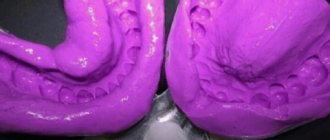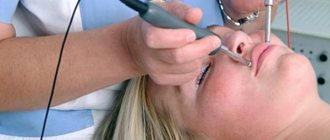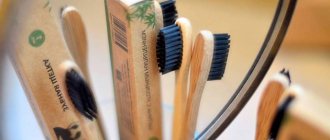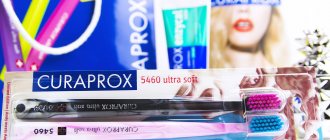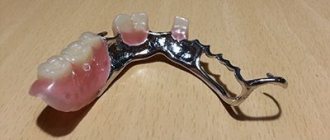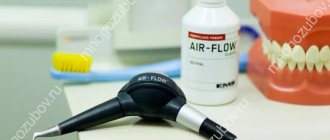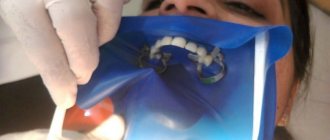Plastering models into an occluder
Plastering models into an occluder
To fix the plaster models in the position of central occlusion, they are folded along the imprints on the rollers and secured to each other using wooden sticks and wax.
The models are then prepared in relation to the occluder. Excess plaster is cut off from the models so that the occluder height pin rests on the platform. It should not interfere with the closing and opening of the occluder and should maintain the height of the central occlusion.
After preparing the models, plaster is mixed, applied to a smooth surface, and the lower frame of the occluder is immersed in it.
A small layer of plaster is then added and the mounted models are placed on it. Use a spatula to smooth the plaster around the entire circumference of the model. Subsequently, a layer of plaster is applied to the model of the upper jaw and the upper frame of the occluder is lowered. In this case, the height pin should fit tightly to the occluder pad. The plaster is compared so that it covers the occluder frame and the model in an even layer.
After the plaster has hardened, the excess is removed, the wooden sticks that held the models together are removed, and the occluder is opened. The wax bases are removed and new wax bases are started to be made for placing artificial teeth on them.
Occluder defects and their consequences
A metal occluder becomes unusable due to improper use or long-term operation. A transverse rod that does not match the diameter leads to play in the lock connecting the upper and lower frames. A loose stop height pin when closing and opening models can distort the interalveolar height and, when setting teeth, thereby cause inaccuracies in occlusion.
On thick models, the stop height pin may be short. In such cases, the disconnected space between the abutment height pin and the pad is filled with plaster to create a fulcrum on the plaster onlay. In an occluder, in which hinge movements often have to be made, the plaster lining is worn away by the contact of the stop height pin, which can lead to a violation of the original height. In such cases, when arranging teeth, it is better to use an occluder, which has an increasing metal bar glued or soldered to the stop area.
Various defects in the occluder, if not corrected in a timely manner, can lead to operational complications. They are detected during the setting of the teeth, as well as when checking the structure of the wax base with the teeth in the oral cavity.
Having found a deficiency in the arrangement of the teeth, the doctor again determines the central occlusion, then knocks the model of the upper jaw off the upper frame of the occluder, applies wax bases to the models and glues them together with wax. After this, the occluder model is re-plastered and then the teeth are rearranged.
Such errors are also observed when the central occlusion is incorrectly determined, when the rollers are unevenly fitted and when they are not tightly connected to each other.
